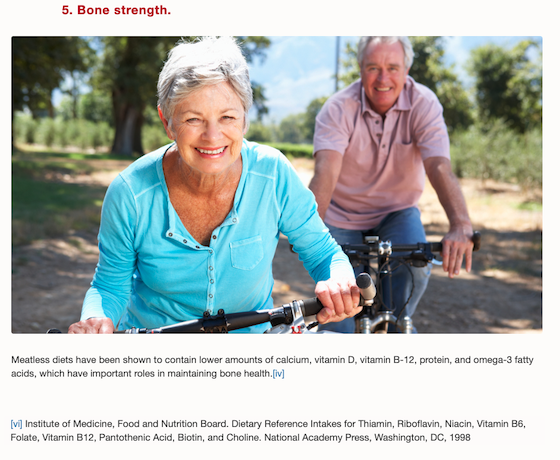Trace Claims, Quotes, and Media to the Original Context
Finally, note any claims, quotes, and media that are not original to the source. We highly recommend that you trace these items to their original content.
If a friend told you that candy was free at the store, you may likely ask the store if that was true before just grabbing some candy and walking out. Likewise, have a healthy skepticism when a source quotes someone, attributes a fact or claim to another source, or embeds a video/image from another source. These items may be deliberately misrepresented, accidentally modified, or simply presented out of context.
You can confirm the accuracy of the quote, claim, or media by tracing it back to the original sources. Once seen in their entirety and in the original content, you can evaluate whether or not it was accurately presented in the first source.
Example
For example, let’s go back to the webpage “12 Good Reasons Meat and Poultry Should be Part of Your Balanced Diet”.
This page claims that “meatless diets have been shown to contain lower amounts of calcium, vitamin D, vitamin B-12, protein, and omega-3 fatty acids, which have important roles in maintaining bone health,” citing the 2014 article “Vegetarian diets and bone status” from the American Journal of Clinical Nutrition.

If we trace that claim back to the source, we find that the original article does state that “vegetarians, and particularly vegans, may be at greater risk of lower BMD and fracture.”
However, the article also states that “the careful selection of foods or fortified foods or the use of supplements” can minimize the risk.
This is critical context missing from the “12 Good Reasons” article, which we would not have discovered if we had not traced the source.
